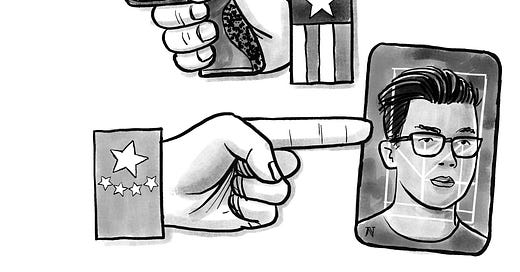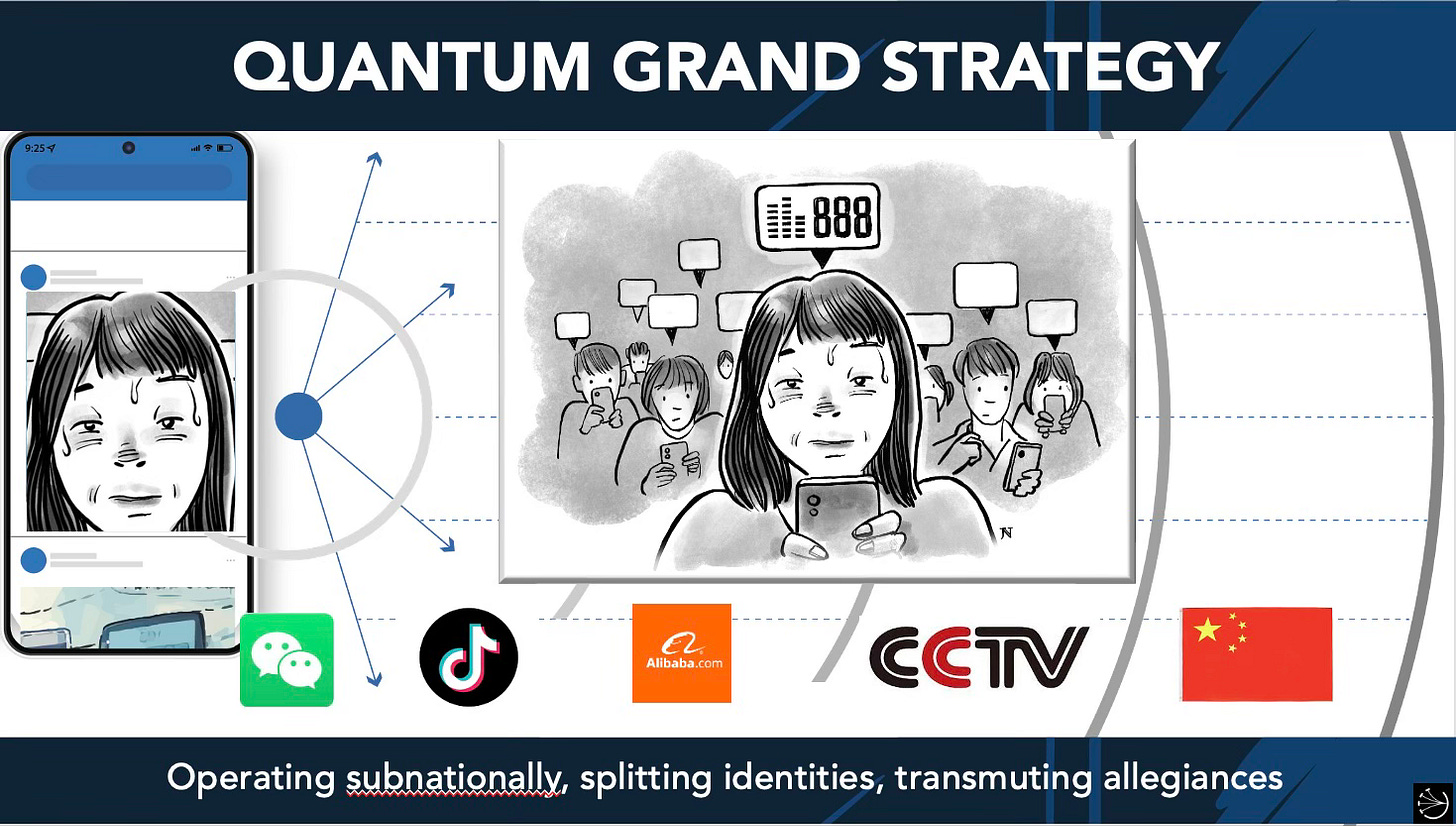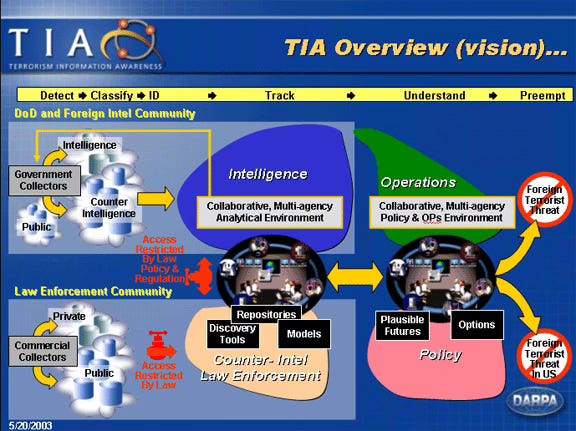This is a reader-supported publication. I give it all away for free but could really use your support if you want me to keep doing this.
You know my general argument for competing superpowers in relation to targeted overseas markets — either advanced or emerging:
Be the preferred provider of 5G hardware and smartphones (discounting like crazy)
Enable and support the rise of the Internet of things (IoT)
Provide the means for smart/safe city surveillance networks
Siphon off and harvest all the identity-related big data that comes from that central position in a country’s networks
Employ all that big data to improve your AI reasoning engines
Slowly but surely become incredibly adept at anticipating and conditioning and steering and capturing and policing and reinforcing behaviors within society that you wish to see while negating those you do not wish to endure
Create and spread signaling/scoring systems that tell citizens what they’re doing right or wrong and attach penalties and reward to that dynamic
Seek out undesirable behavior before it happens by predictive analytics
Become a freely-offered (to the local government) policing function.
There are two ways to become the world’s policeman:
The episodic top-down method of swooping in as needed and taking out bad guys
The bottom-up method of always being there to pre-empt bad action.
The US is built for, and has long engaged in, the former approach; the Chinese are pioneering the latter approach.
The US and the West either match that capability and compete on that basis or they cede the rising Global South to this effective capture strategy on the part of Beijing, which seeks a Minority Report-like capability to monitor individual threats to CCP rule the world over — I kid you not.
From America’s New Map:
China peddles that Orwellian vision around the world to frightened governments eager to control their restive middle class and tech-savvy youth. It is also why Beijing vacuums up Big Data on everyone on this planet to predictively identify those who are, or may become, a threat to Communist Party rule—Minority Report on a global scale.
The citation on that last point:
WAPO: Cate Cadell, “China Harvests Masses of Data on Western Targets, Documents Show,” December 31, 2021.
The goal is blandly described as “public opinion guidance,” but it is the starting point for policing.
This will not be a comfortable ride for anyone involved, as there are Orwellian danger points throughout, but this is the future of policing and this is how policing eventually replaces military defense and overseas military interventions by placing your assets and capabilities on the ground and in the networks and pervasively situated throughout a society — naturally in conjunction with the local government and, in our case, with a much-needed emphasis on using these technologies in the right way.
And yes, I know that distinguishing the West’s “right way” from China’s “wrong way” will be tricky as hell and fraught with difficulties, but — again — non-competition is not an option but a surrender.
A lot of this surveillance capacity is derived by identifying recognition technologies (facial recognition, gait recognition, and other fingerprint-like identifying technologies to come). They’ve been around for a while and been subject to all sorts of experiments here and there.
Did you know?
Facial recognition technology was first used at Super Bowl XXXV in Tampa in January 2001 — or before 9/11. Law enforcement captured images of people entering Raymond James Stadium and compared them to a database of criminals' faces. While it was a test to catch terrorists and other criminals, it primarily identified pickpockets and ticket scalpers. Media reports were a bit alarmist and yet … right on the nose: this was a chilling glimpse of the future.
Going back in time ….
This all started with the Irish Republican Army extending its bombing campaign to London in the early 1970s, eventually yielding — after some signature strikes in the early 1990s — a metropolitan expanse (dubbed the Ring of Steel) covered with CCTV cameras. The first of its kind, London set the global standard for police-engineered video surveillance.
As I noted here recently, the US experimented with a Minority Report-like Total Information Awareness capacity within the national security community in the years following 9/11:
Repeating from Wikipedia:
Total Information Awareness (TIA) was a mass detection program by the United States Information Awareness Office. It operated under this title from February to May 2003 before being renamed Terrorism Information Awareness.
Based on the concept of predictive policing, TIA was meant to correlate detailed information about people in order to anticipate and prevent terrorist incidents before execution. The program modeled specific information sets in the hunt for terrorists around the globe. Admiral John Poindexter called it a "Manhattan Project for counter-terrorism” …
Congress defunded the Information Awareness Office in late 2003 after media reports criticized the government for attempting to establish "Total Information Awareness" over all citizens.
Although the program was formally suspended, other government agencies later adopted some of its software with only superficial changes. TIA's core architecture continued development under the code name "Basketball." According to a 2012 New York Times article, TIA's legacy was "quietly thriving" at the National Security Agency (NSA).
China picked up the baton next with its Safe/Smart Cities offerings from the combined talents of Hikvision and Huawei. As noted in America’s New Map, the reach of these companies is global, as are the CCP’s ambitions in promoting their market capture around the world.
From my book:
This is why the US government is so concerned about China’s domination of 5G networks being rapidly constructed around the world today, particularly those involving its national flagship companies Huawei, world-leading provider of 5G “backbone” telecommunications infrastructure, and Hikvision, world-leading provider of video surveillance equipment. Eventually, the IoT will develop into the Artificial Intelligence of Things (AIoT) in which cognitive computing mimics the human brain, allowing AI networks to operate with minimal human intervention and develop on their own.
If that strikes you like the jumping-off point for conscious computers to overthrow their human masters per the Terminator movies, then let me just note that Beijing calls its nationwide video surveillance system “Skynet.” It turns out you really can make this stuff up, and China aims to get there first by being the leading worldwide hardware provider for 5G, the IoT, and the AIoT.
While America maintains its lead in software, China’s aggressive global marketing of its hardware is paying off. By massively subsidizing firms like Huawei and Hikvision as they piggyback their global sales on China’s Belt and Road Initiative (BRI), Beijing has succeeded in building in “backdoors”throughout the world’s expanding surveillance networks, leading US government officials to accurately label Huawei a 5G “Trojan horse.”
As I argue later in the book:
As with all Chinese offerings, America cannot counter with simple admonitions to resist. The competition here is not between China and perfection but between some security and no security—between belonging and going it alone. If America wants the world to say no to Chinese social-control technologies, then we need to offer something better and equally tangible: belonging that delivers similar security with less loss of liberty.
Well, it looks like we’re beginning to experiment at home, which is the natural precursor to exporting the capacity/cooperation.
First, as I also recently noted: TIA is back, this time with illegal migrants being the excuse.
USA TODAY: Big Tech takes on immigration with new migrant tracking software for ICE
Second, the policing side of the equation is likewise experimenting.
WAPO: Police secretly monitored New Orleans with facial recognition cameras
For two years, New Orleans police secretly relied on facial recognition technology to scan city streets in search of suspects, a surveillance method without a known precedent in any major American city that may violate municipal guardrails around use of the technology, an investigation by The Washington Post has found.
Police increasingly use facial recognition software to identify unknown culprits from still images, usually taken by surveillance cameras at or near the scene of a crime. New Orleans police took this technology a step further, utilizing a private network of more than 200 facial recognition cameras to watch over the streets, constantly monitoring for wanted suspects and automatically pinging officers’ mobile phones through an app to convey the names and current locations of possible matches.
Scary from a US perspective, but we don’t want to be the last ones to the party, because this is the future of national security throughout the world — not to mention a primary point of competition between China and the US, as we either lean into developing and exporting these technologies and systems or watch China gobble up the planet’s major metros. Once embedded, the winner owns a surveillance capacity within those states/regions/continents. That leads to a big data harvesting/hoarding dynamic, and that leads to one side “winning” the AI race — whatever that means.
Call it the Face Race, because this competition is well underway.














Interesting, and apt, concept. Although she tends to go…further afield, see similar information purported online by Whitney Webb.
Did you see that Altman at OpenAI wants to get your iris scan in exchange for a few scraps of crypto? Golly gee I wonder what they'll use that for. Reminded me very much of this concept you've been sharing.